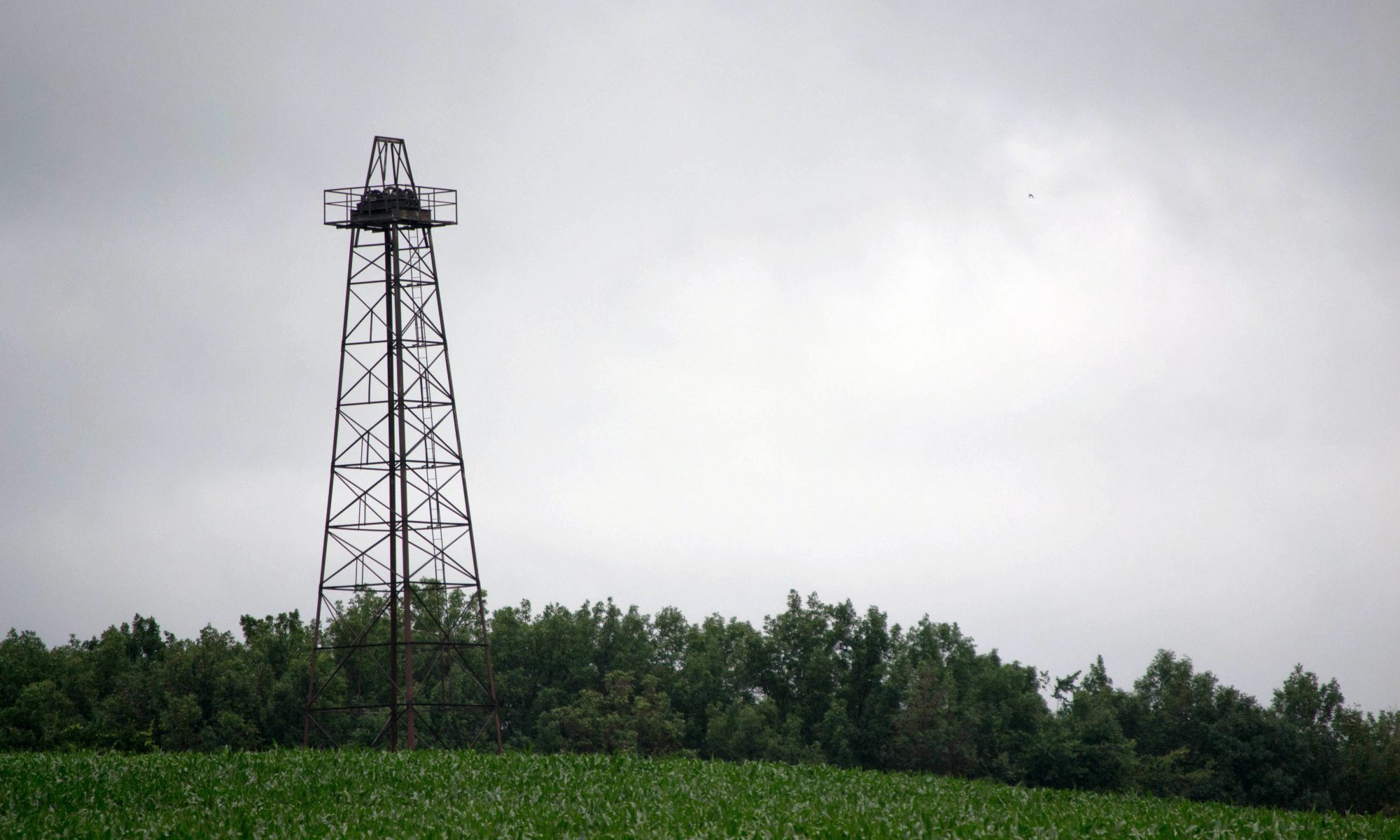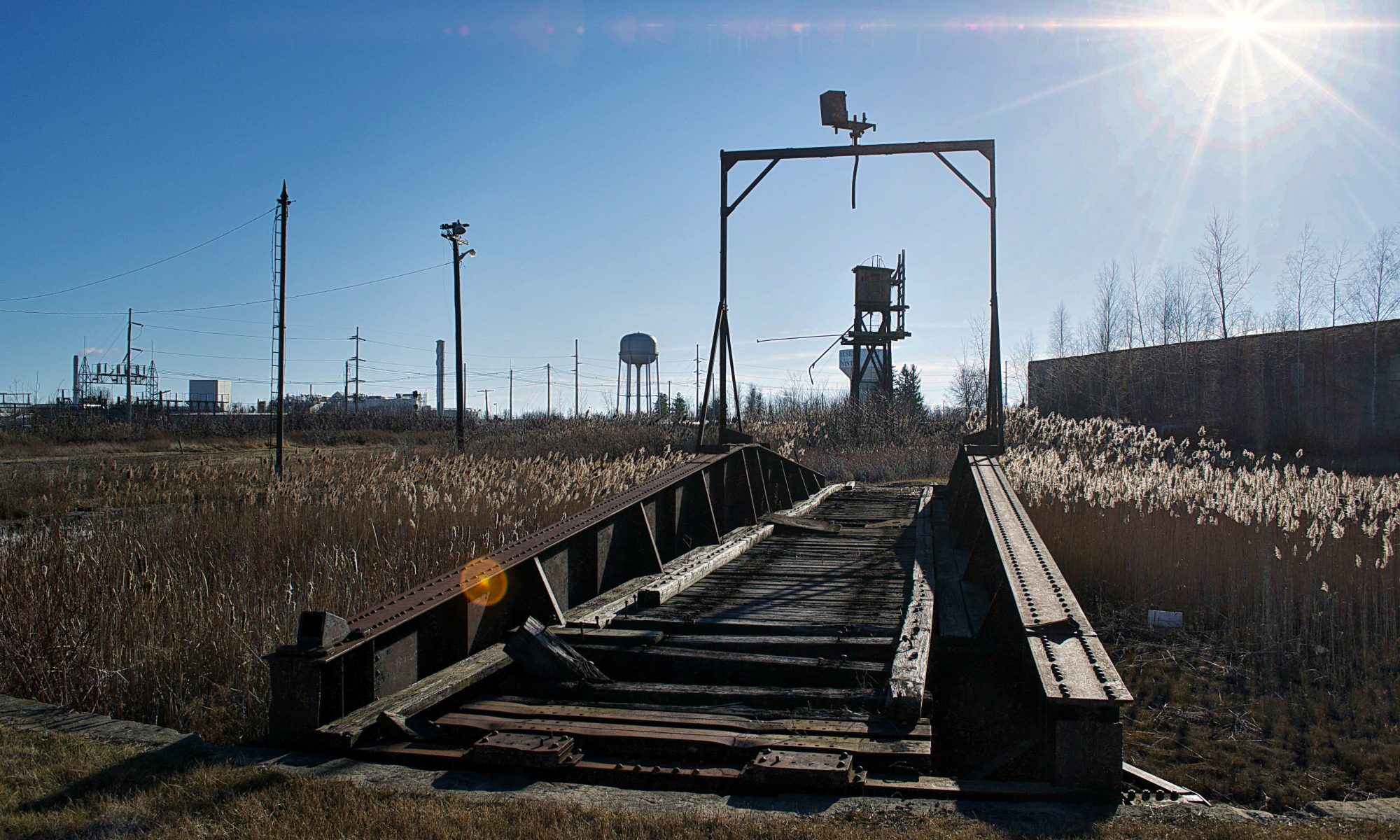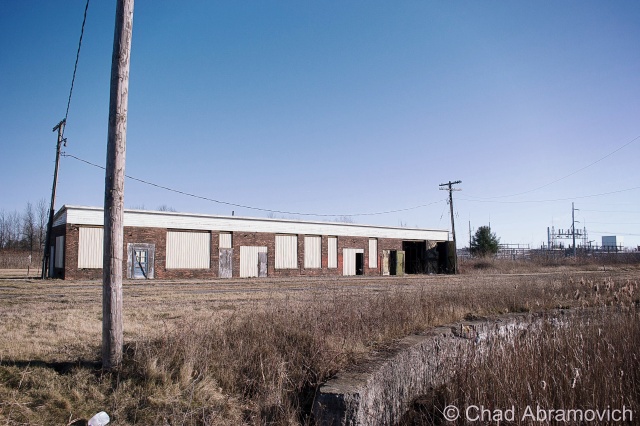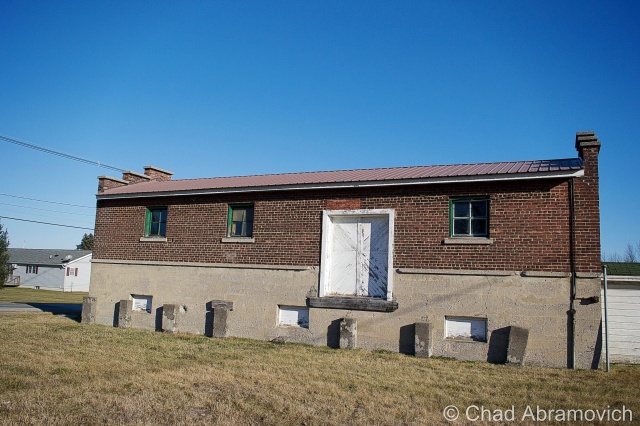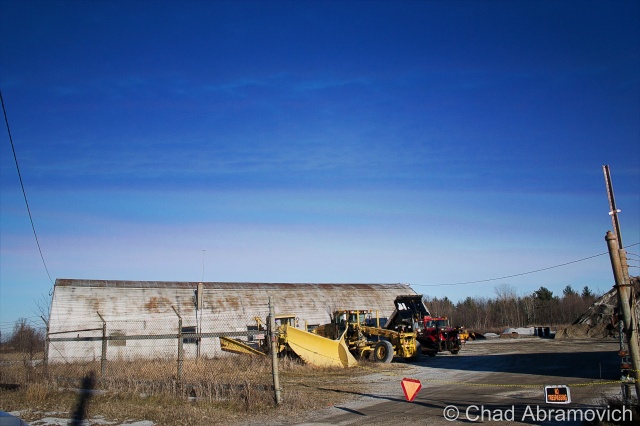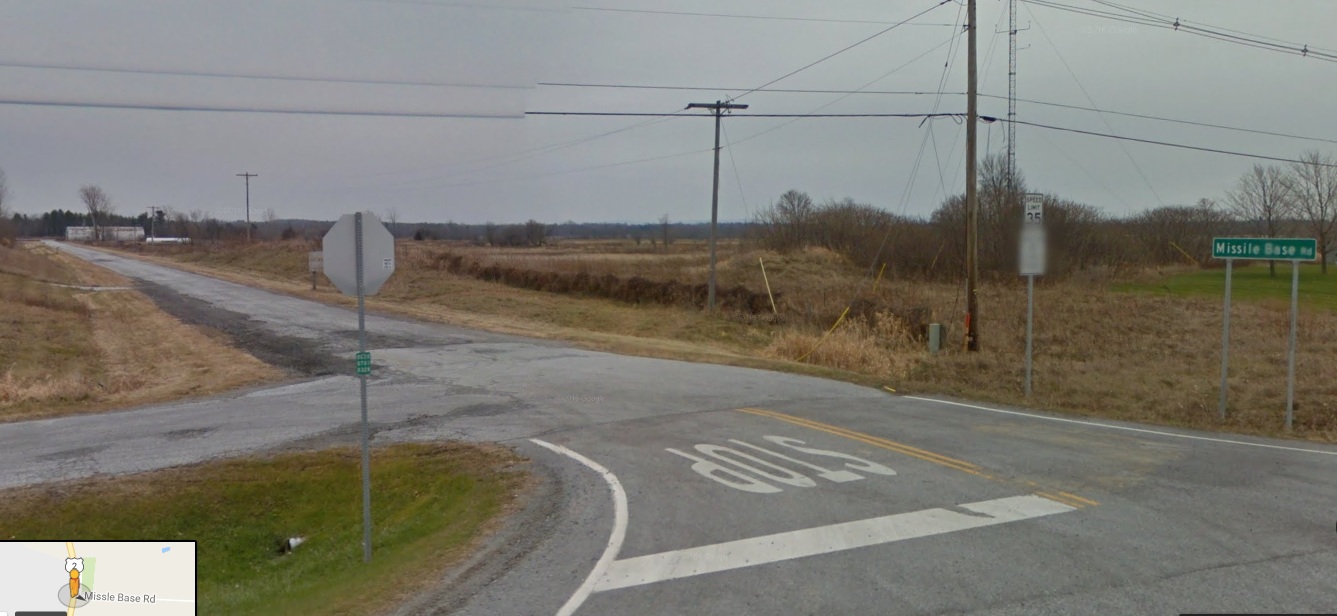On a recent cruise along the back roads of St. Albans town, I came across something peculiar among the sprawling pastures and humble farmhouses. Heading down the dips and rises of Lower Newton Street, the strange object could be seen a long distance away from it’s location, towering above the forests and silos of farm country, and it stuck out. Pulling over to get a better look at this curiosity, my first thought was, “it looks like an oil derrick “. But I stopped. The idea of an oil derrick in Vermont seemed out of place, especially today. So, was this rusting tower, slightly leaning over an entanglement of field grass, in fact an oil well? When I arrived home, coffee mug sitting nearby, I took to the internet, and found what seems to be a lost, yet briefly fascinating era of Vermont history.
Vermont has a rich history of treasure seeking it seems. From the annoyingly mysterious Captain Mallett supposedly burying his gold chest near Coats Island on Malletts Bay, Spanish prospectors finding silver deep within our granite mountains, or the suspected Celtic copper seekers and the strange stone domes left behind from their visits.
The northwest part of the state can also join the ranks of treasure booms, and like many tales, it took a matter of digging deeper to uncover it.
The strangeness started with the Bellrose family of Swanton. Lawrence Bellrose had just dug a 650 foot well, and successfully struck water, which he had then hooked up to the plumbing of their house. Shortly after, a fuse blew out in the cellar, followed by a strange hissing noise. Mr. Bellrose descended the stairs to investigate the damage but was taken by that foreign sound. He struck a match for light, and the room lit up with a fireball.
But this apparently wasn’t an isolated incident, as other Vermonters from around the region have also had similarly bizarre encounters in their own homes.
Highgate Center well digger Lyman Feely was drilling a well in South Alburgh. He had reached 465 feet and hit an abundant water source, which provided 60 gallons a minute. One of his men had light a small fire nearby to keep his hands warm – and when the drill hit water, there was a large explosion which tore through his rig and and badly injured two of his men. After the explosion, Feely found that the well was filled with bubbling gas and floating rock.
Kitchen faucets at Robert Carpenter’s farm in nearby Alburgh blazed like torches, which some people might consider to be attributed to a rare phenomena called fire water. What was going on here?
In St. Albans, a similar event unfolded, but this time, something was different. After a farmer near the Yandow farm accidentally set his entire field ablaze, they noticed that most of the flame quickly went out, but a small crevice continued to burn, which was the key to this seemingly nonsensical phenomena. This wasn’t something supernatural – this was just the opposite and very much natural. They had discovered natural gas deposits in Northern Vermont.
Though this might have came to a shock for some people, as early as the 1950s, The American Gas Association had mapped and studied the Lake Champlain valley and claimed that the region would be a valuable source for natural gas and oil in the future. And it seemed to be true. Robert Carpenter recalled that a lot of neighboring wells dug in Grand Isle County would often be found to be filled with natural gas.
Nothing was really ever acted upon, until St. Albans businessman Douglass Kelley became interested, and launched Vermont’s first oil boom. Because natural gas is often discovered before oil, Kelley assumed he was sitting on top of a black gold mine.
Kelley banded together a group of like minded associates, and started the now defunct Maquam Gas and Oil Company. On April 19th, 1957, Isadore Yandow’s St. Albans farm became the first place in Vermont to be drilled for oil. Soon, neighboring landowners were swayed by dreams of becoming rich and the rest of the state dreamed of the prosperity that the oil boom had brought other places in the country. Kelley even brought school buses full of children and tourists out to rural St. Albans to see the rig. Everyone seemed to be interested.
But after months of drilling to a depth of 4,500 feet, labor teams working intensely around the clock, and striking rocks, methane, water and everything but oil, operations finally stopped and the prospects were abandoned. Because Vermont was new to the oil culture, maybe they didn’t realize that often only one out of several wells that would be constructed would ever actually strike oil – and Kelley only financed and constructed a single well.
But the seeds were already planted, and a few years later, two more wells were financed and constructed in Malletts Bay, but after reaching 10,000 feet, they ran out of money and left empty handed as well.
Rutland resident and geologist Earle Taylor wasn’t so quick to abandon the dream. He also figured if they found natural gas deposits, then oil would surely follow. Taylor contacted Rutland attorney James Abatiell, and with 24 other Vermonters, formed the Cambrian Corporation, and Taylor’s expertise proved to be as “good as gold”. He did a large scale geological survey of Vermont, costing well over $100,000, and the results were promising.
Between 1962 and 1963, Cambrian persuaded Belgian oil company Petrofina to come to Vermont and run an operation on a parcel of farmland in Alburgh. From the accounts of the operation, things were looking good – the company had drilled to a depth of over a mile with a tower 160 feet high. This was also the first dig in Vermont to use rotary equipment – and extensive further studies were conducted as the beginning cuts were made. They even went as far as doing sonic and gamma-ray tests on the topography. It seems this was incredibly and painstakingly well researched and meticulously planned. The crew was said to have kept saying “It’s looking good, it’s looking good!” the entire time. But something happened. They just stopped, left, and gave no explanation. To this day, that remains a mystery. And just like that, Vermont’s first and only oil boom came to an end with little commotion.
Today, almost no visible evidence remains of this short lived time in Vermont history, except for that single abandoned derrick in rural St. Albans, rusting at the edge of a sprawling cornfield. The wooden blocks at the base of the derrick have rotted away long ago, slowly making the derrick tip to about 30 degrees, eventually coming to rest on the well head.
I can’t help but wonder, if someone were to pick up where Kelley left off, would they find a rich supply of Vermont oil just feet before the cutoff point?
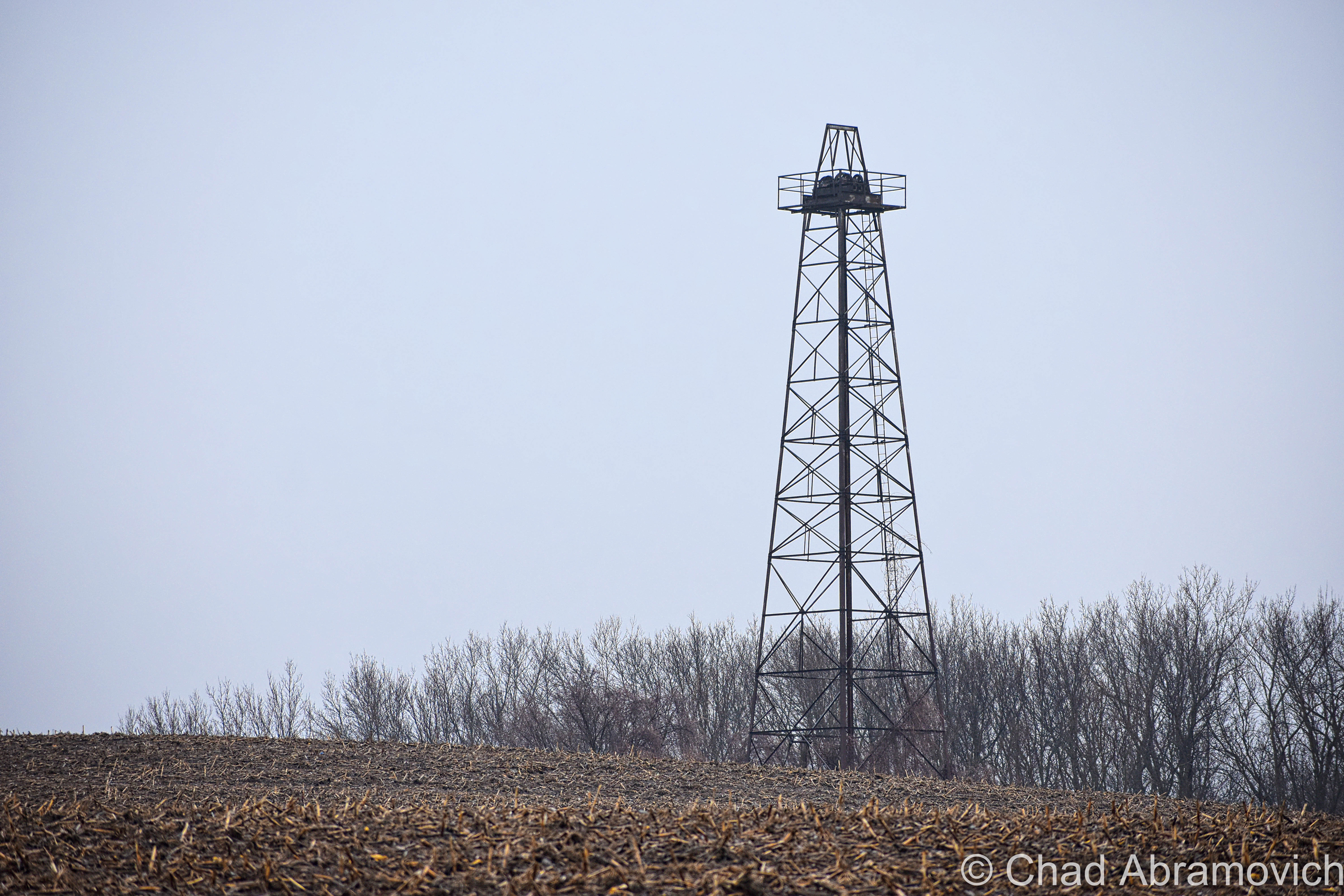
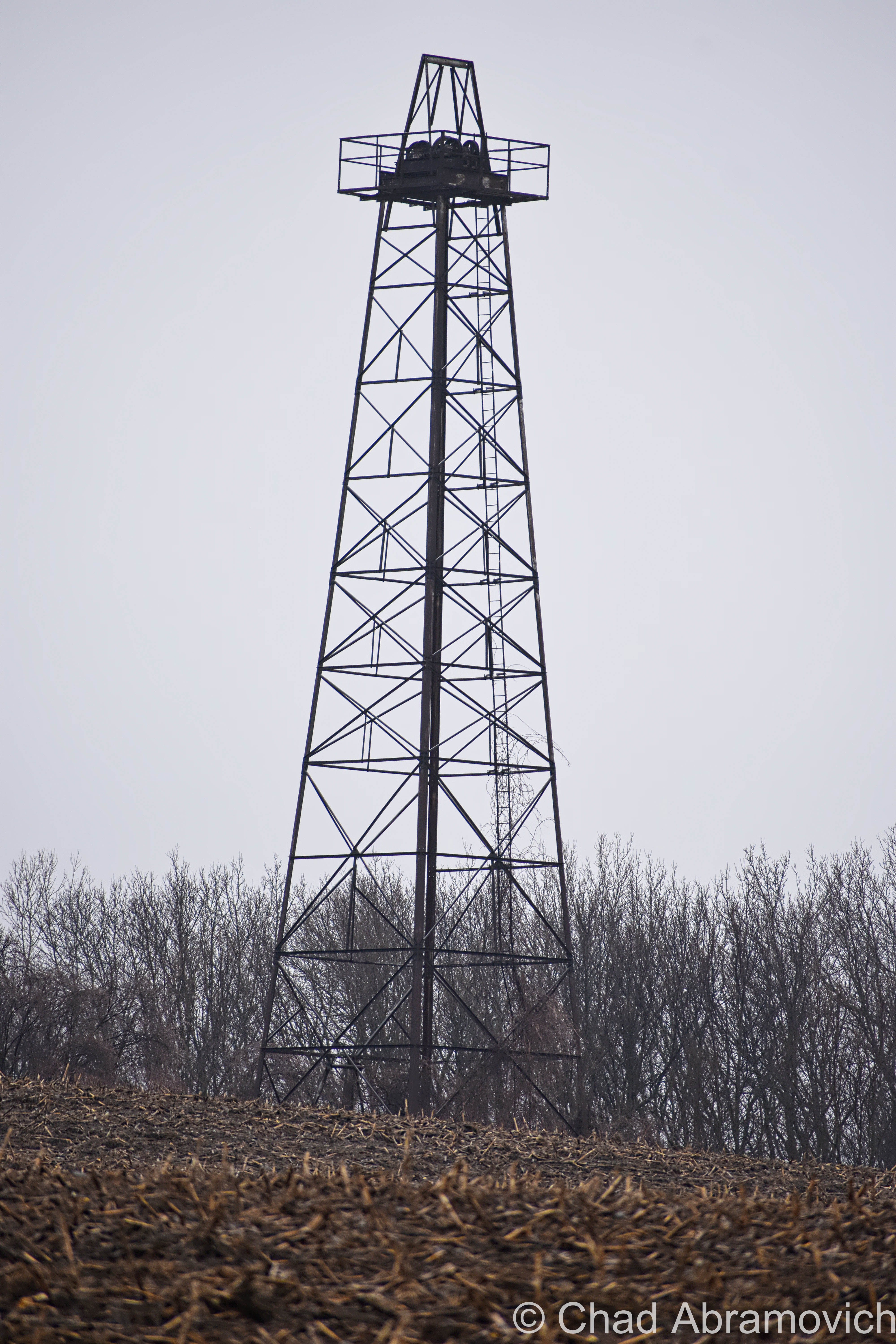
If you’re curious, the Vermont Geological Society has a map with all of the former oil drilling operations in the Northwest part of the state – and you can view that here.
Additional Links:
A History of Oil and Gas in Vermont, The Addison Eagle
“Vermont Crude“, Green Mountains Dark Tales by Joseph Citro
On Vermont’s Great Oil Boom, Lance Khouri, Vermont Life Spring 1977
—————————————————————————————————————————————–
To all of my amazing fans and supporters, I am truly grateful and humbled by all of the support and donations through out the years that have kept Obscure Vermont up and running.
As you all know I spend countless hours researching, writing, and traveling to produce and sustain this blog. Obscure Vermont is funded entirely on generous donations that you the wonderful viewers and supporters have made. Expenses range from internet fees to host the blog, to investing in research materials, to traveling expenses. Also, donations help keep me current with my photography gear, computer, and computer software so that I can deliver the best quality possible.
If you value, appreciate, and enjoy reading about my adventures please consider making a donation to my new Gofundme account or Paypal. Any donation would not only be greatly appreciated and help keep this blog going, it would also keep me doing what I love. Thank you!
Gofundme: https://www.gofundme.com/b5jp97d4


